Abstract
Giardia and Cryptosporidium levels were determined by using a combined immunofluorescence test for filtered drinking water samples collected from 66 surface water treatment plants in 14 states and 1 Canadian province. Giardia cysts were detected in 17% of the 83 filtered water effluents. Cryptosporidium oocysts, were observed in 27% of the drinking water samples. Overall, cysts or oocysts were found in 39% of the treated effluent samples. Despite the frequent detection of parasites in drinking water, microscopic observations of the cysts and oocysts suggested that most of the organisms were nonviable. Compliance with the filtration criteria outlined by the Surface Water Treatment Rule of the U.S. Environmental Protection Agency did not ensure that treated water was free of cysts and oocysts. The average plant effluent turbidity for sites which were parasite positive was 0.19 nephelometric turbidity units. Of sites that were positive for Giardia or Cryptosporidium spp., 78% would have been able to meet the turbidity regulations of the Surface Water Temperature Rule. Evaluation of the data by using a risk assessment model developed for Giardia spp. showed that 24% of the utilities examined would not meet a 1/10,000 annual risk of Giardia infection. For cold water conditions (0.5 degree C), 46% of the plants would not achieve the 1/10,000 risk level.
Full text
PDF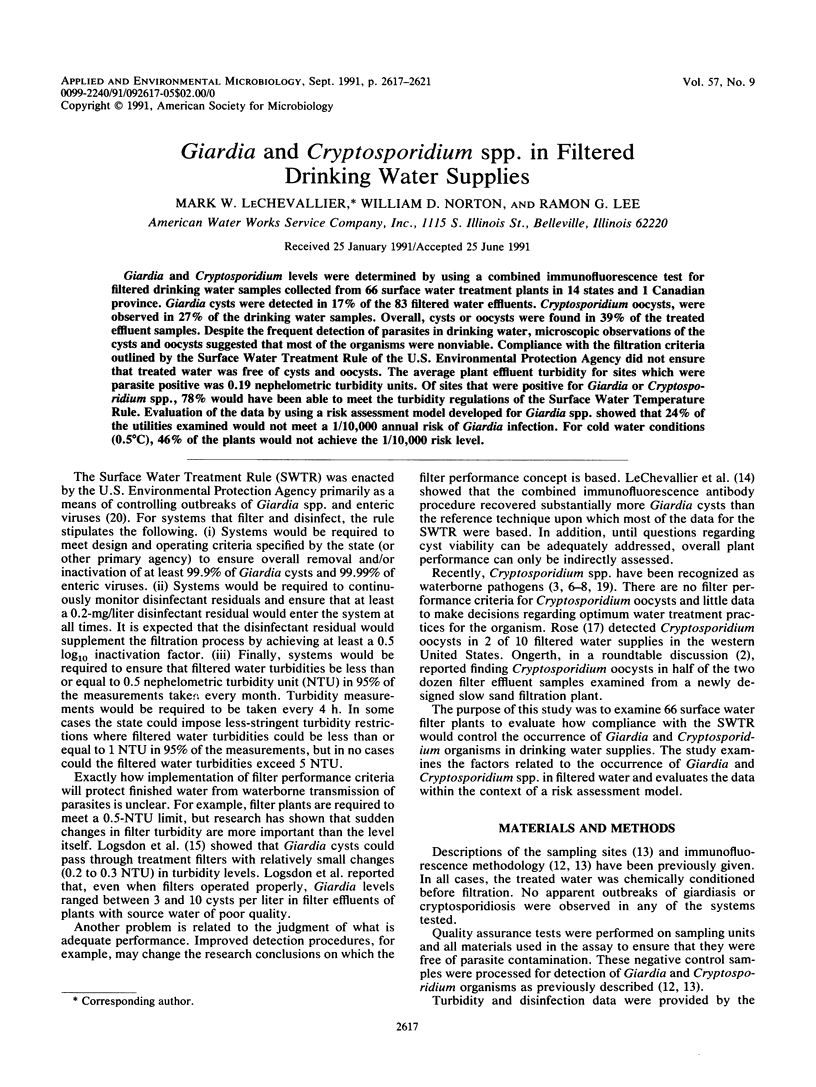
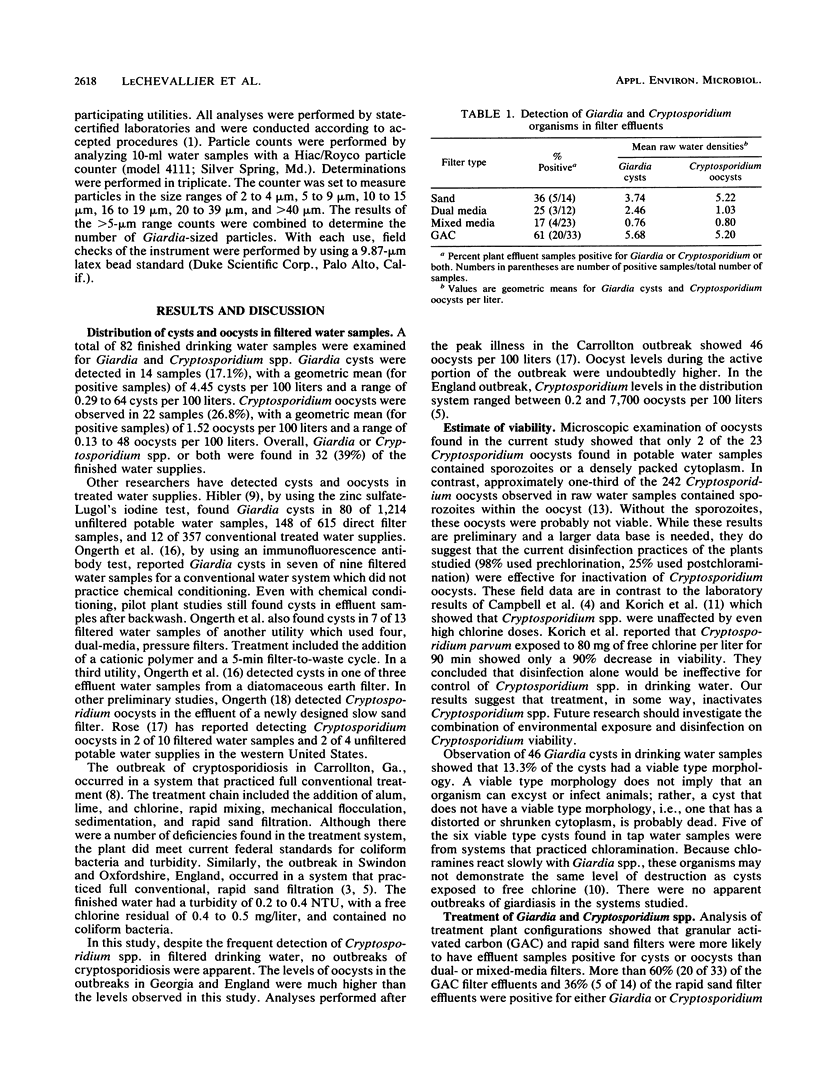
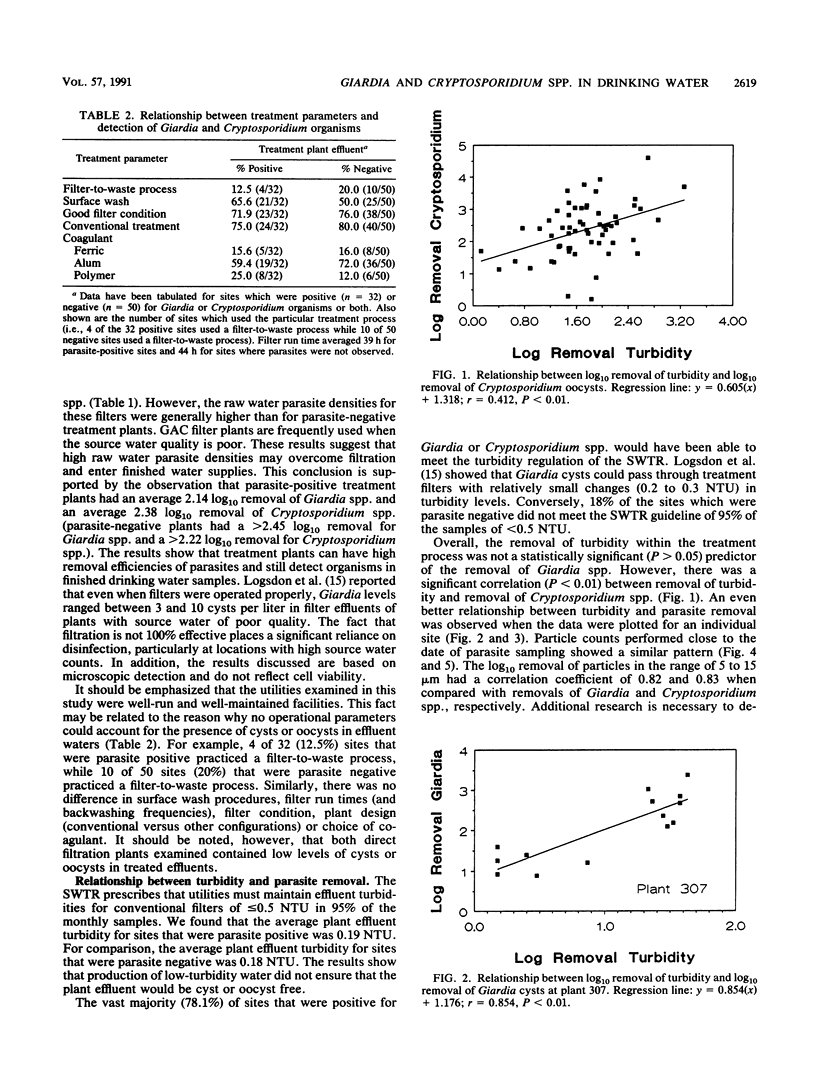
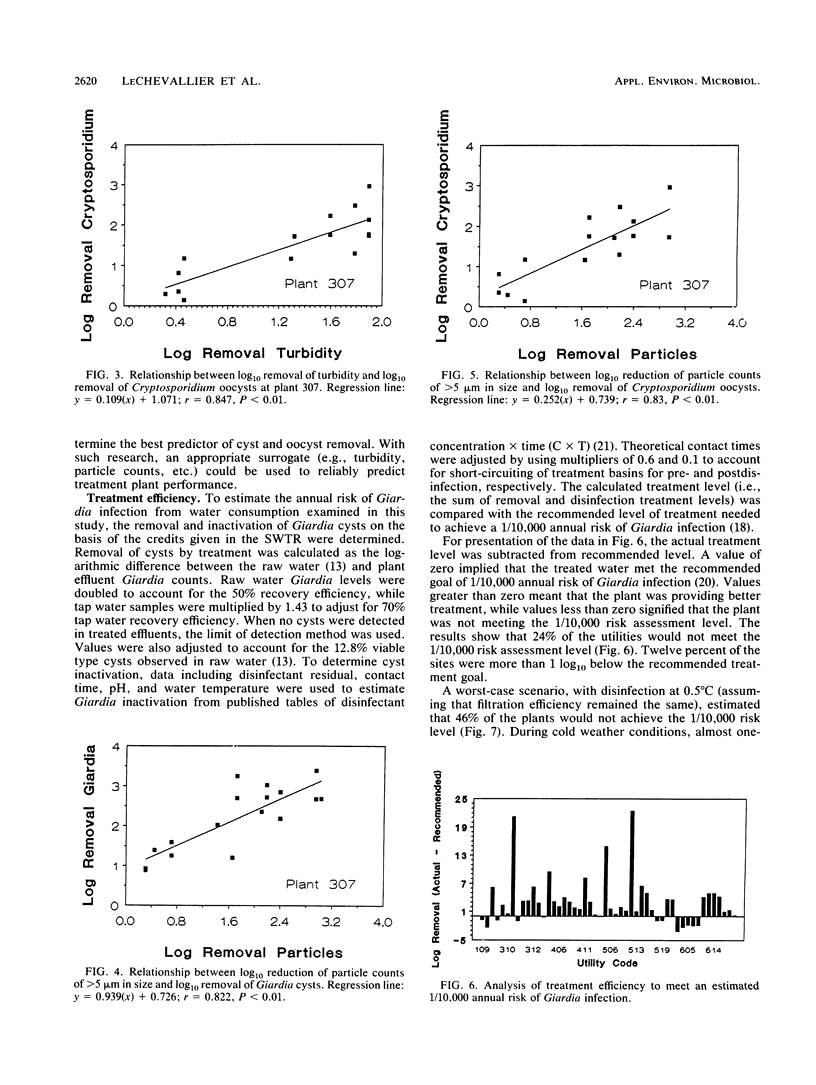
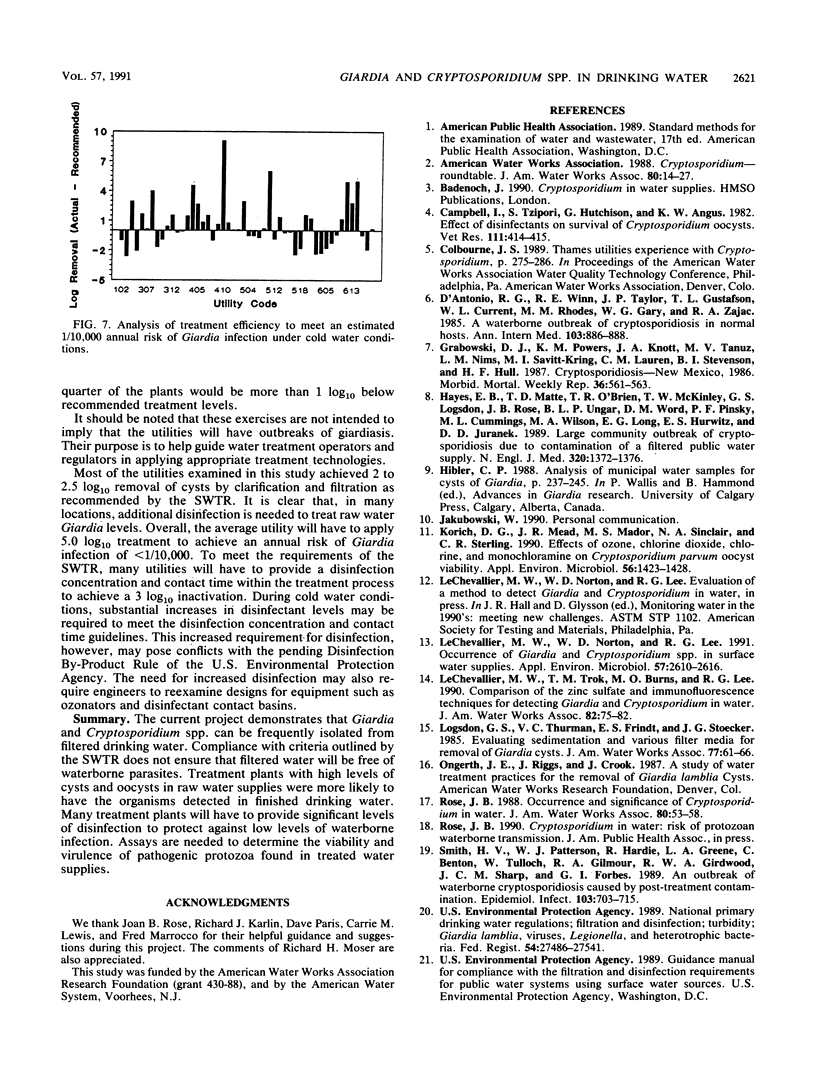
Selected References
These references are in PubMed. This may not be the complete list of references from this article.
- Campbell I., Tzipori A. S., Hutchison G., Angus K. W. Effect of disinfectants on survival of cryptosporidium oocysts. Vet Rec. 1982 Oct 30;111(18):414–415. doi: 10.1136/vr.111.18.414. [DOI] [PubMed] [Google Scholar]
- D'Antonio R. G., Winn R. E., Taylor J. P., Gustafson T. L., Current W. L., Rhodes M. M., Gary G. W., Jr, Zajac R. A. A waterborne outbreak of cryptosporidiosis in normal hosts. Ann Intern Med. 1985 Dec;103(6 ):886–888. doi: 10.7326/0003-4819-103-6-886. [DOI] [PubMed] [Google Scholar]
- Hayes E. B., Matte T. D., O'Brien T. R., McKinley T. W., Logsdon G. S., Rose J. B., Ungar B. L., Word D. M., Pinsky P. F., Cummings M. L. Large community outbreak of cryptosporidiosis due to contamination of a filtered public water supply. N Engl J Med. 1989 May 25;320(21):1372–1376. doi: 10.1056/NEJM198905253202103. [DOI] [PubMed] [Google Scholar]
- Korich D. G., Mead J. R., Madore M. S., Sinclair N. A., Sterling C. R. Effects of ozone, chlorine dioxide, chlorine, and monochloramine on Cryptosporidium parvum oocyst viability. Appl Environ Microbiol. 1990 May;56(5):1423–1428. doi: 10.1128/aem.56.5.1423-1428.1990. [DOI] [PMC free article] [PubMed] [Google Scholar]
- LeChevallier M. W., Norton W. D., Lee R. G. Occurrence of Giardia and Cryptosporidium spp. in surface water supplies. Appl Environ Microbiol. 1991 Sep;57(9):2610–2616. doi: 10.1128/aem.57.9.2610-2616.1991. [DOI] [PMC free article] [PubMed] [Google Scholar]
- Smith H. V., Patterson W. J., Hardie R., Greene L. A., Benton C., Tulloch W., Gilmour R. A., Girdwood R. W., Sharp J. C., Forbes G. I. An outbreak of waterborne cryptosporidiosis caused by post-treatment contamination. Epidemiol Infect. 1989 Dec;103(3):703–715. doi: 10.1017/s0950268800031101. [DOI] [PMC free article] [PubMed] [Google Scholar]


